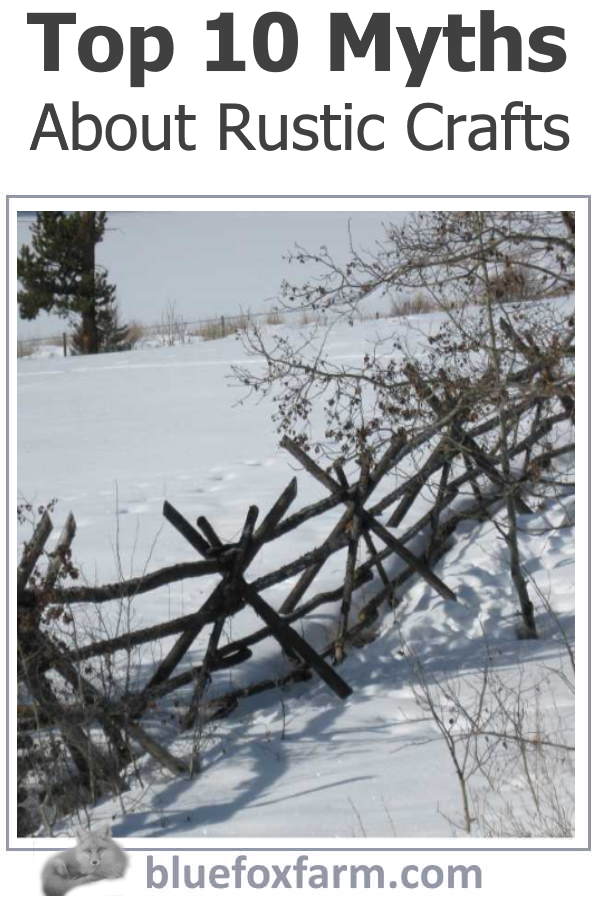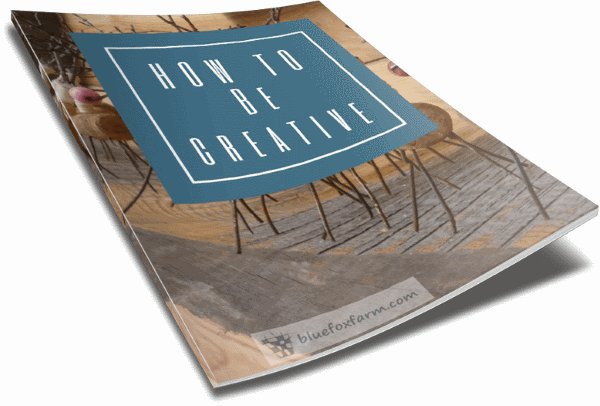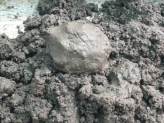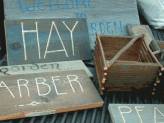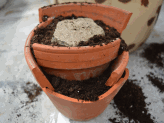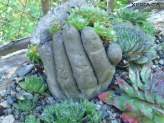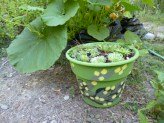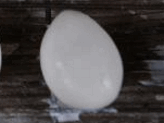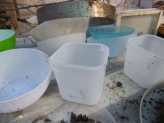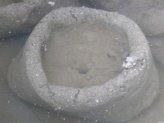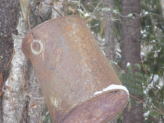Top Ten Myths about Rustic Crafts
Don't believe everything you hear...
Rustic crafts are not well understood; many people think that they're super hard to do, and you need special tools, you have to dress well and have all the right contacts; I'm going to help spread the truth about these great garden crafts:
1: Rustic crafts last forever, so they have to be perfect
The very nature of rustic crafts is that they are ephemeral, or short lived.
The beauty of it is that you can enjoy the aging and weathering process, knowing that in a while the article will return to the earth, and your life will be forever enriched by being exposed to the artwork.
2: You have to wear good clothes when you're making rustic crafts
It's best to use your oldest play clothes; splinters, pitch and sap are constant threats to your clothes when working with twigs, and the concrete powder working with hypertufa will ruin your good clothes.
I find that old sweat pants and a t-shirt are perfect attire, and of course, a ball cap for scrambling through thick brush; steel toed boots are optional.
3: You don't need gloves to make rustic crafts, it's all natural material
Some of the supplies for rustic crafts are not as benign as you might think; some of the natural materials could have come in contact with poison ivy, so gloves are essential when working with twigs.
If you know that there is poison oak or poison ivy in your area, please be careful.
Pitch and sap are hard to remove from bare skin; rubbing alcohol (isopropyl alcohol) works well, or just let it wear off.
For hypertufa, I wear surgical gloves which are thin enough to be able to feel what you're doing, yet offer protection from the caustic concrete mix.
Check often when wearing these kinds of gloves because they quickly get holes in.
4: Rustic crafts take a lot of room to make
Many crafts can be done in a small space, using only a table for a work bench.
Some examples of these might be seed crafts, drawing mandalas, or making small items out of twigs.
Precutting the pieces outside can make it easier to work in smaller areas.
5: Building things to display in your garden has to be done by a professional
The itinerant twig artisans of the mid 1930's were people from all walks of life that found their careers cut short, their homes taken away, and they started to wander throughout the country, selling their talents of using free materials to make some amazing art work.
Their crafts included small pieces of furniture, tables, night stands and lamps, and sometimes bigger things too; the owners of summer camps and lodges would feed them and let them build their crafts in exchange.
After a few weeks, off they would go again, always looking for something better.
There is no such thing as a professional twigger!
6: You need specialized tools
Many of the same tools that you will find in any tool box or gardening shed will be perfect for building crafts; a hammer and some nails, a pruning saw, pruners, a rasp, tie wire and needle nosed pliers.
You will be amazed at what you can build with only those things.
7: Supplies for rustic crafts are hard to find
Walking outside your door in the morning, you will be surrounded by possibilities. Tree prunings, tin cans, seed pods, pine cones, acorns, rustic salvage, and much more. Learn to think outside the box...
8: No-one knows how to build rustic crafts like hypertufa
Most people who get into hypertufa and other rustic crafts are self taught. Seeing the results of these great ways of working with simple materials can be addictive; you have some success, and that's where it starts.
9: Twig crafts and rustic furniture are very difficult to build
With a few simple skills and some basic supplies, you can get started on the twig building adventure. Pruned branches from street trees or orchards, some wire twisting them together, and you have a unique and lovely way of supporting a clinging vine.
Start small and build your skills until you have a repertoire of techniques to draw from.
10: You have to be a designer to make these kinds of crafts
This is one myth that happens to be true; you are the designer, whether it's something simple, or an incredibly complex project. The beauty of rustic craft making is that everyone can be a designer, architect, engineer and artisan.
Learn what it takes to be creative - we all have the gene but how do we develop it? Get the free guide!
Fill in the form below for your copy;
(Don't be disappointed - use an email address that will accept the free download - some .aol email addresses won't.
If you don't see your download within a few minutes, try again with another email address - sorry for the bother.)
